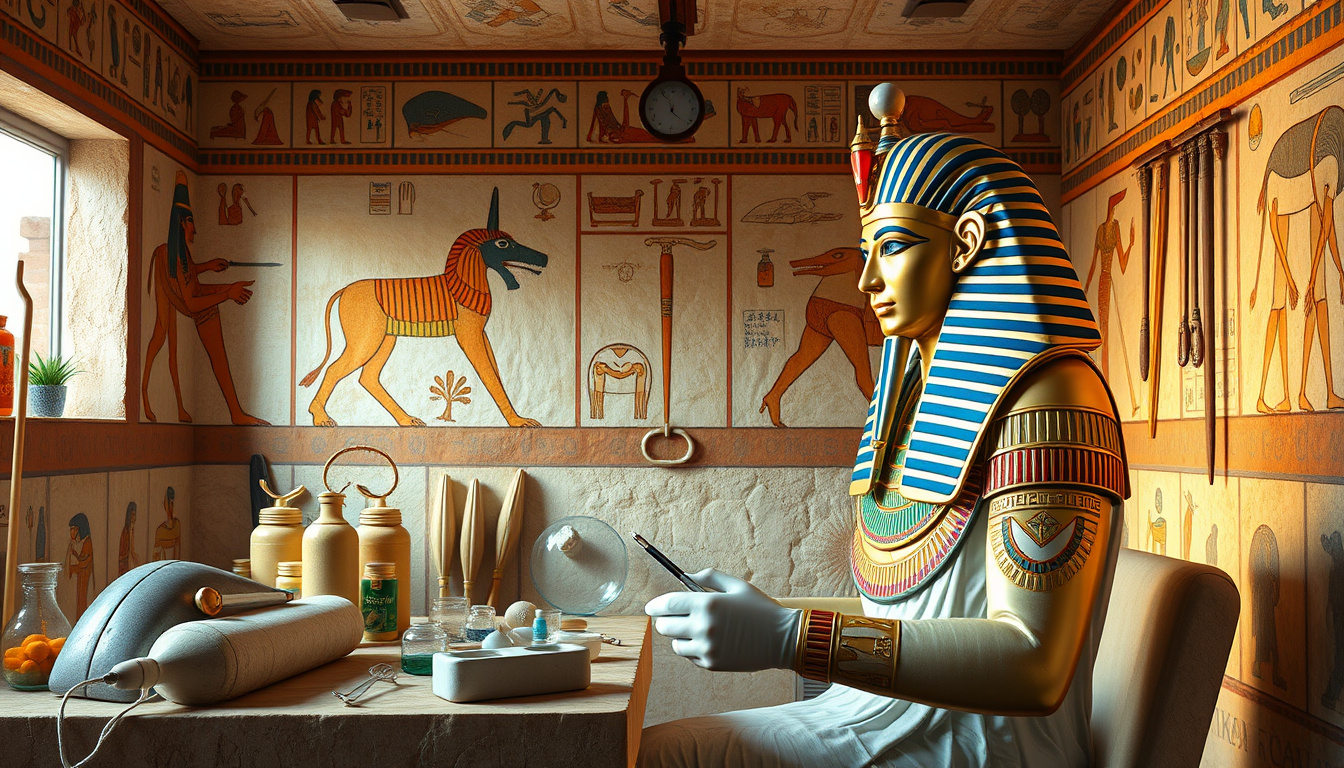Ancient Egyptian dentistry is a fascinating yet often overlooked chapter in the annals of medical history.
As one of the earliest civilizations to develop within the cradle of the Nile, Egypt not only advanced in the fields of art and architecture but also made significant strides in health and medicine, including dentistry.
In this article, we will explore the historical context of ancient Egyptian dentistry, the techniques employed by practitioners, the tools and instruments they relied on, common dental practices, and the lasting influence that these practices have had on modern dentistry.
Whether you are a history enthusiast or a dental professional, the journey into the past will unveil a world where healthcare was a blend of meticulous craft and cultural significance.

 pyramids and majestic pharaohs often come to mind, yet one lesser-known aspect of this civilization is its approach to ancient Egyptian dentistry.
pyramids and majestic pharaohs often come to mind, yet one lesser-known aspect of this civilization is its approach to ancient Egyptian dentistry.
Surprisingly advanced for its time, dentistry in ancient Egypt was more than just a rudimentary practice; it was a blend of practicality and cultural beliefs, offering insights into the lives of people from this fascinating era.
Archaeological findings show that ancient Egyptians undertook various dental practices to address oral health issues.
They dealt with common problems such as tooth decay and gum disease; they even possessed rudimentary tools that resemble modern-day dental instruments.
This included scrapers and even forceps made from various materials, aimed at treating ailments such as tooth extractions or cleaning decay.
Additionally, ancient Egyptian healers often employed a mix of herbal remedies and natural treatments, utilizing plants known for their antibacterial properties.
The ancient Egyptians believed that oral health was tied to overall well-being, as evidenced by the numerous references to dentistry in their medical papyri.
Prescriptions often included ingredients like honey, which was valued for its healing properties and used in various forms for oral care.
Despite their advancements, many Egyptians faced challenges related to diet, such as consuming coarse grain which contributed to wear and tear on teeth, leading to the need for further treatments typically conducted by specialized practitioners.
Understanding these ancient Egyptian dental practices sheds light not only on their medical knowledge but also on their cultural significance—where preserving health was an important aspect of their daily lives, reflecting their broader beliefs about the afterlife and the importance of a clean body.
Whether you’re exploring Cairo in search of the great pyramids or delving deep into the history of ancient civilizations, the story of dentistry continues to captivate those interested in how far we’ve come and the roots that laid the groundwork for modern dental care.
 August 2025
August 2025

